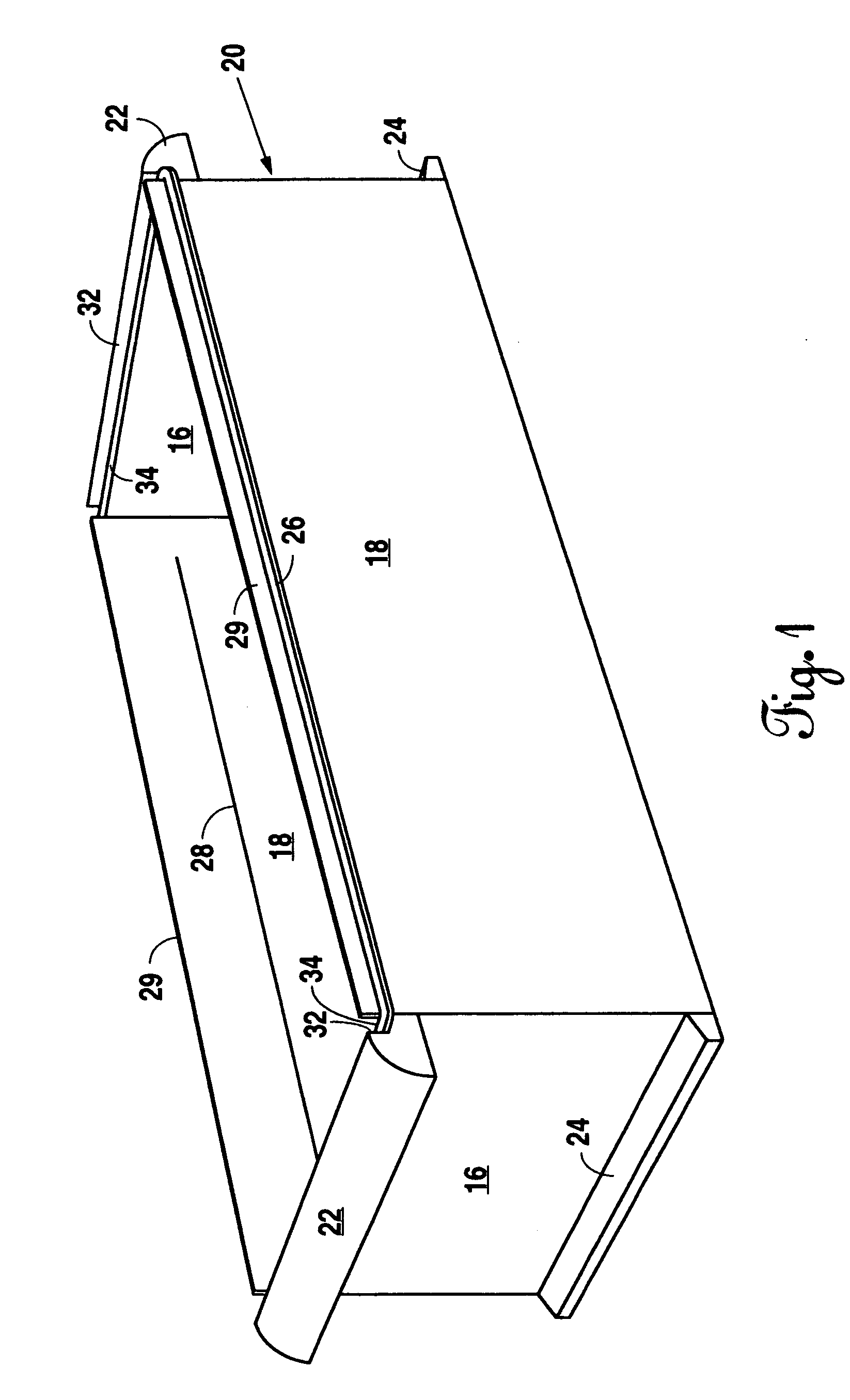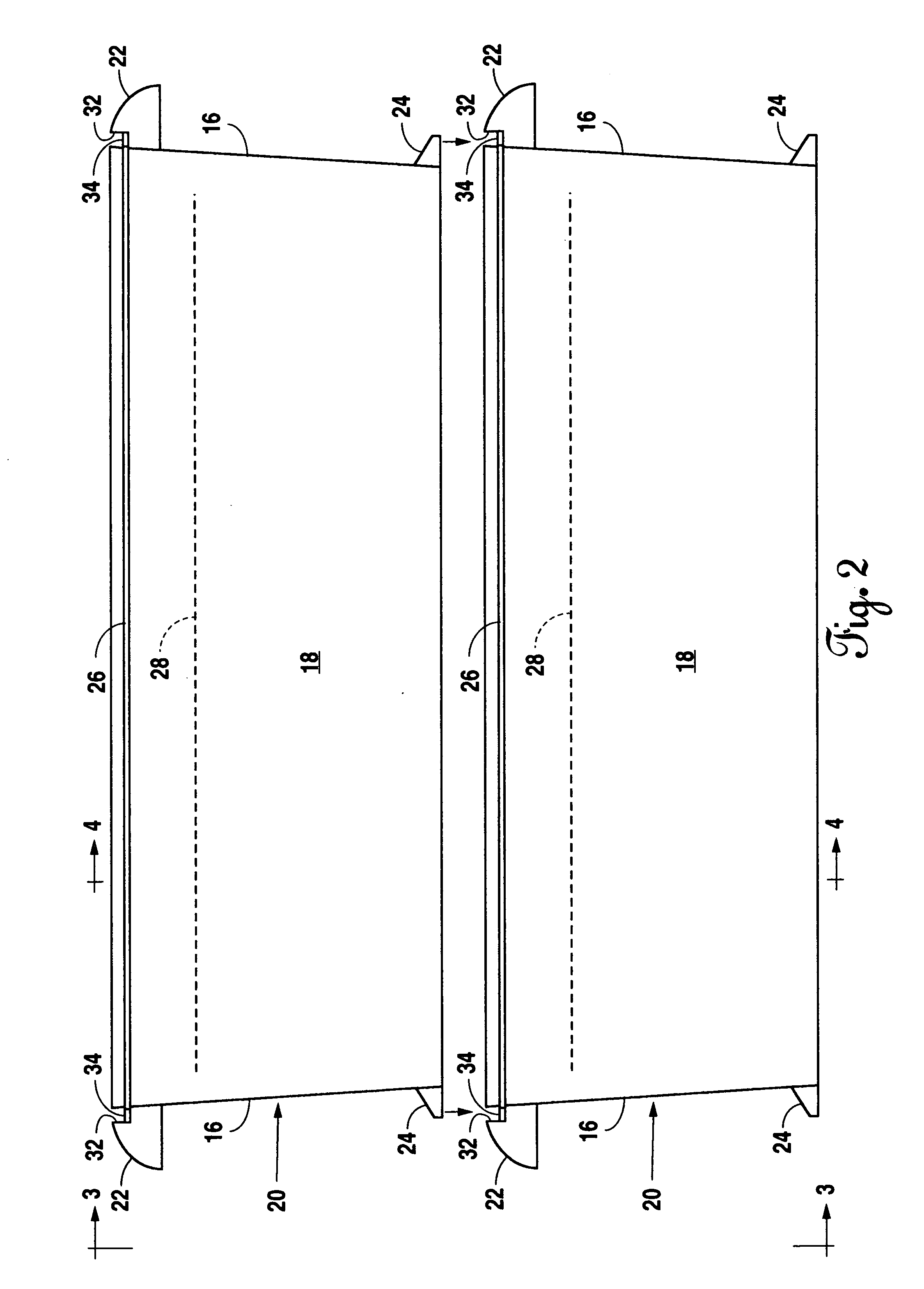Stackable mold for making block ice
a block ice and mold technology, applied in the field of block ice molds, can solve the problems of ice melting on the outer surface, ice melting on the outside surface, and the inability to remove the solid block of ice from the container, and achieve the effect of facilitating efficient freezing of water and adding strength
- Summary
- Abstract
- Description
- Claims
- Application Information
AI Technical Summary
Benefits of technology
Problems solved by technology
Method used
Image
Examples
Embodiment Construction
[0037] Referring to FIG. 1, the preferred embodiment for a stackable mold 20 for making block ice is disclosed. Multiple molds 20 can be stacked directly on top of one another. The mold 20 has a bottom and a sidewall. In one embodiment the sidewall is comprised of panels. The panels form a generally rectangularly shaped mold 20, with two parallel long sides 18, and two parallel short sides 16. However, the sidewall can take other shapes, such as rounded or generally oval. The bottom surface (not shown) of the mold 20 is flat. The mold 20 has an open top.
[0038] Handles 22 are located along the top edges of the short sides 16 of the sidewalls of the mold 20. Stacking lips 24 are located along the bottom edges of the short sides 16. Guide lips 32 and 29 are located on the top of the mold 20. The guide lips 29 are located on the long sides 18. The guide lips 32 are located along the short sides 16.
[0039] The mold 20 of the preferred embodiment is tapered toward the bottom, as best sho...
PUM
 Login to View More
Login to View More Abstract
Description
Claims
Application Information
 Login to View More
Login to View More - R&D
- Intellectual Property
- Life Sciences
- Materials
- Tech Scout
- Unparalleled Data Quality
- Higher Quality Content
- 60% Fewer Hallucinations
Browse by: Latest US Patents, China's latest patents, Technical Efficacy Thesaurus, Application Domain, Technology Topic, Popular Technical Reports.
© 2025 PatSnap. All rights reserved.Legal|Privacy policy|Modern Slavery Act Transparency Statement|Sitemap|About US| Contact US: help@patsnap.com



